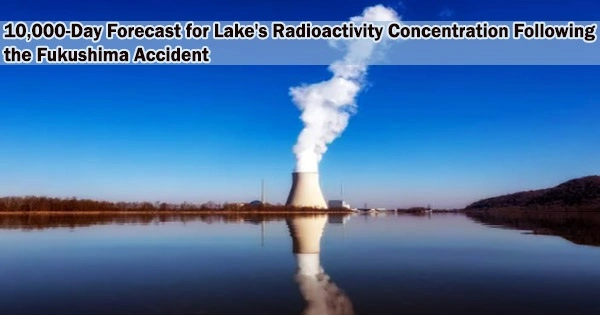A severe earthquake and tsunami in March 2011 devastated the Fukushima Daiichi Nuclear Power Plant, resulting in the radioactive cesium-137 contamination of neighboring lakes. Even though Lake Onuma on Mount Akagi, one of these lakes, had its contamination assessed for a while after the disaster, its long-term contamination has been unknown. A Japanese study team has now clarified this matter.
Researchers from the University of Tsukuba estimated Lake Onuma’s 137Cs radioactive content for up to 30 years after the accident in a study that was published last month in Scientific Reports.
A closed lake, like Lake Onuma, is one where the amount of input and runoff water is constrained. Just after a nuclear accident, these lakes’ radioactivity concentration drops significantly, but it thereafter may start to drop more slowly.
“Previous investigations have used the two-component decay function model, which is the sum of two exponential functions, to fit the measured 137Cs radioactivity concentration,” says the author of the study, Professor Yuko Hatano. “Our work is instead based on the fractional diffusion model, a framework that captures the complex diffusion processes occurring in the lake water. These processes include convection-induced circulation, turbulent mixing, and absorption by plankton and other organisms.”
The research team developed a long-term prediction formula for the 137Cs radioactive content of both the lake water and pond smelt, a common fish species in Lake Onuma, using the fractional diffusion model. Following the Fukushima accident, they calculated the radiation levels for up to 10,000 days using this prediction technique.
“Both models fit the radioactivity concentration of the lake water and pond smelt measured in the first few years after the accident,” explains Professor Hatano. “However, our results show that the decrease in radioactivity concentration is slowed down if the fractional diffusion model is used rather than the conventional two-component decay function model.”
The methodology developed by the researchers will allow for the long-term forecast of radioactive contamination in closed lakes and offer long-term prospects for people who live nearby. The authors do point out that future measurements would be required to assess the accuracy of such a prediction for a period of time longer than 5,000 days following the Fukushima catastrophe.





